2021 Kia Seltos Vs 2020 Mazda CX-3 Vs 2020 Toyota C-HR Comparison

The continued crossover obsession has pushed automakers to find niche upon niche. The Seltos, Kia’s latest entry into the fray, splits the difference between the sub-compact and plain ol’ regular-compact classes.
Due to this, we wanted to give the smallest Kia crossover a bit of a welcoming party. Actually, we did two. This is the first, taking the mid-level EX model and pitting it against two slightly smaller, high-trim competitors. During one of the hottest days of the year, we gathered the Seltos, revised 2020 Toyota C-HR, and 2020 Mazda CX-3 to learn which one deserves your hard-earned.
Get a Quote on a New Kia Seltos, Mazda CX-3, or Toyota C-HRPowertrain and driving feel
All three of these little crossovers offer surprisingly similar on-paper stats. They all use 2.0-liter, naturally-aspirated engines, with 140-ish horsepower and and a similar figure for torque. The Mazda is the horsepower and torque leader, with 148 and 146, respectively. The Kia is two ponies down, with torque the lowest of the party at 132 lb-ft. Meanwhile the Toyota is a further two horsepower shy (144), but backs that up with a torque figure right in the middle of the group (139 lb-ft). It and the Kia both rely on CVTs to put the power to the ground, whereas the Mazda uses a traditional six-speed automatic. Both Seltos and CX-3 are here with their available all-wheel drive systems; Toyota only offers the C-HR in front-drive form.
As you’d expect, there’s little separation between straight-line pace on the road. None feel particularly fast, but it’s the Toyota that brings up the rear. The CVT blunts performance, and so does the highest curb weight of the trio. Around town it’s fine, but over 30 mph (50 km/h) the little Toyota feels sluggish. You’ll want to plot out highway passes well in advance. On the plus side, it’s got that relaxed, languid suspension tuning that makes it feel like a bigger car at higher speeds. I drove it for 350 miles in a single day to test the new 2021 RAV4 Prime, and it handled both highways and rougher country roads with aplomb. The C-HR shrinks back down to its usual size in the city, responding quickly and accurately to steering inputs.
SEE ALSO: 2021 Toyota RAV4 Prime First Drive Review: Plug-In PowerThe CX-3 is, unsurprisingly, the sportiest of the three. With the most power, the most torque, the lightest curb weight, and the smallest footprint, the Mazda darts around with a sense of urgency the others can’t match. The suspension is firm, but not overly so—there’s less roll in the corners than either C-HR or Seltos. Its steering is the sharpest, with a tight feel and consistent weighting through its rotations.
And what of the newcomer? The Seltos is more like the C-HR than the pint-sized CX-3 around town. It’s perfectly palatable in the urban jungle, swallowing up speed bumps and manhole covers without complaint. Once on the highway however, the Seltos feels less self-assured. Its boxy shape makes it susceptible to cross-winds, and makes the torque-light engine work for every pass.
Bottom Line: Your preferences will play a big part here. The Mazda is easily the driver’s choice of the trio. The C-HR is comfortable around town and on the highway, but its lack of poke is evident on the latter. The Seltos is similarly pliant in urban settings, yet nervous at higher speeds. Our personal tastes lean Mazda here, but passengers will likely prefer the others.
Fuel economy
If you’re buying a smaller SUV, chances are fuel efficiency is a pretty important factor. According to the EPA, all three of these little guys get 29 mpg combined, and 27 mpg in the city. The Seltos and C-HR both tie for 31 mpg; the Mazda goes one further, at 32. Canadian figures are similarly close: the C-HR and Seltos post an identical 8.2 L/100 km average, and the Mazda sips slightly less at 8.1.
We’d consider this a loss for the C-HR then, as it lacks all-wheel drive yet doesn’t even use that to its advantage at the pumps.
Due to our weekly schedules, none of us drove our particular cars the same way, so an apple-to-apples, real-world comparison can’t happen. That said, managing editor Kshitij Sharma saw an average of 25.8 mpg during his week with the Seltos serving as the family hauler. My (solo) highway dash from Toronto to Kingston and back in the C-HR saw its average hit 30.9 mpg. Editor Sebastien Bell wasn’t far off that in the CX-3 either, scoring a 30.2 at the end of his week.
SEE ALSO: 2021 Kia Seltos EX Review: Where Do Its Priorities Lie?Bottom Line: At the pumps, the Mazda wins. Our real-world testing had the C-HR ahead, but that’s to be expected when it gobbled up 350 miles of almost exclusively highway driving.
Technology and Features
The new guy earns a few points early on. The Seltos features a big 8.0-inch infotainment touchscreen, and its system is snappy and easy to use. Toyota’s screen is the same size, but its operating system feels a generation behind. Not only that, but the buttons surrounding it are tiny, making them harder to poke without drawing more attention away from the road.
The Mazda bolsters the touchscreen approach with a central rotary dial. It’s pretty intuitive, and it keeps you from having to lean forward or stretch to poke away at a screen. The dash-mounted infotainment is an inch smaller than the others, if you’re worried about that sort of thing. The Mazda augments that with the only head-up display of the pack. The top-spec GT trim also features a Bose audio system.
All three feature Android Auto and Apple CarPlay support, now that Toyota’s added the former. That’s well and good, but the C-HR’s lone USB port is stingy, especially for a car ostensibly targeting younger, tech-forward folks. None get a wireless charging port: the Kia does in America, but our Canadian tester isn’t so lucky.
Bottom Line: This isn’t a clean-cut category. The Kia’s infotainment system is the best, and it doesn’t forget about backseat accommodations with climate vents and a USB plug. The Mazda and Toyota counter with power-adjustable front seats—hey, it matters!—full-speed adaptive cruise control and, in the Mazda’s case, a better sound system and the HUD.
Safety
Only one of these little crossovers earns a Top Safety Pick+ from the Insurance Institute for Highway Safety (IIHS): the Mazda CX-3. Neither the C-HR nor Seltos get the highest rating from the IIHS, or even its regular Top Safety Pick badge.
The National Highway Traffic Safety Administration (NHTSA) rates the Toyota and Mazda 5 stars for its frontal and side crash tests. The CX-3 does get a warning note about an “intrusion” to the left door during the side impact test, however. Meanwhile the Seltos receives a 4-star rating for frontal impacts, and 5 for the side.
All three of these small crossovers come with a suite of safety assists no matter the trim. Each one includes automated emergency braking, auto headlights, and lane departure assists. Depending on trim—but included on all three here—you’ll also find rear cross-traffic alert and blind-spot monitoring. The Kia misses out on the adaptive cruise control of the Toyota and Mazda: it’s locked to the highest turbo-engined trim only.
Bottom Line: The Mazda might be the oldest one of the pack, but it still gets the high marks here, and thus it wins the category.
Interior and Cargo Space
None of these little crossovers feel like penalty boxes, with good fit and finish and quality materials throughout.
That being said, the Seltos’ materials are merely okay in this company. The dashboard is harder plastic, and the cupholders use huge swathes of it. At least the faux carbon-fiber trim gives the dash some visual interest. We all like the fractal speaker enclosures on the doors too, and the synthetic leather seat material is good enough that we didn’t miss the real thing. Speaking of, the front thrones are comfy, yet bolstered enough to hold you in place if the mood strikes. The second row seats don’t earn the same high praise: they’re flat, and always feel like they’re trying to subtly nudge you out, like a guest who’s overstayed their welcome. But—and this is a big but—the Seltos’ rear row is far and away the most accommodating of this pack, so at least you have room for your legs as an adult.
We can’t say the same about the Mazda CX-3. The stubby little product of Hiroshima has the smallest footprint to work with, and with reasonable front-row space, something had to give. Our heads all hit the roof in the back of the CX-3, and legroom is best described as “short distances only.”
Clawing back some respect, the Mazda has a high-quality interior that draws plenty of inspiration from the Miata. The dash design is clean and minimal, with strips of Alcantara encouraging you to reach out and touch it. The perforated leather seats are as supportive as they are good-looking, and Mazda has nailed the right steering wheel size and thickness. “It has the best seating position and ergonomics,” says Kshitij, before doubling down: “and the best drive too.”
SEE ALSO: 2020 Kia Forte GT ReviewAnd then there’s the Toyota. In terms of measurements, it has the most legroom up front and the least in the rear. That gives the driver the ability to balance things out if necessary—I drive quite far forward, so can “sit behind myself” without too much issue. You’ll need to, since the Toyota only has 31.7 inches of rear legroom, or half a foot less than the Kia. Even with the front seats pushed forward, the C-HR’s rear bench still isn’t as inviting as the Kia’s though. To make matters worse, that stylish high-cut rear door leaves a tiny portal for ingress and egress. You’ll have to really duck to get in there, and once you’re in, it’s the most claustrophobic, again because of that high belt line. The aggressive exterior looks and the rear headrests conspire to make the scene out of the rearview mirror pretty compromised too. The cabin is typical Toyota quality though, with soft-touch plastics and a straight-forward layout.
It isn’t even a contest for cargo space. The CX-3 offers up 17.8 cubic feet (504 liters) of space behind the second row; the C-HR, slightly more at 19.1 (540). The Seltos adds 50 percent more storage over the Mazda, with 26.6 cubes (753 liters). Drop the seats and the Seltos gains even more of an advantage: it will swallow 62.8 cubes (1,778 liters) versus the Mazda’s 42.7 (1,209) and the Toyota’s piddly 37 (1,047).
Bottom Line: If you’re planning on using those rear seats even somewhat often, the added space in the Seltos goes a long way. That said, most cars on the road are usually carrying just one or two people total. If that’s your use case, the Toyota and Mazda both have higher-quality interiors. You can still shuttle the occasional person or two around in the back too: they just might think you don’t like them.
Styling
The Seltos brings the blocky shape of Kia’s much larger Telluride to the sub-compact segment, but with its own unique details. A familiar grille makes it easily identifiable up front, while the horizontal headlights give it an added impression of width. In our tester’s blue it’s appealing, and yet should blend into traffic easily enough. Kia has kept the SUV aggression to a minimum, and we dig that. As Kshitij mentioned in his review of the Seltos, it does lack any particular stand-out features out back though. Shave that badge off and it could be from any Asian brand.
SEE ALSO: 2021 Kia Seltos EX Review: Where Do Its Priorities Lie?Toyota treated the C-HR to a facelift for 2020. Not much has changed here though: it’s still weird, so if you didn’t like it at launch you’re unlikely to change your mind. Personally, I’m a fan: it’s not what I’d call pretty, but it’s eye-catching and dramatic, words that up until recently weren’t exactly common for a Toyota. I like the hidden rear door-handles, and the two-tone roof. I don’t like that Toyota discontinued the Nineties-tastic turquoise/white color combo though. At least this one’s called Hot Lava.
If you took the wheel-arch cladding off the CX-3, you’d think it was a regular Mazda hatchback. For some, that’s a benefit: Kshitij prefers its looks to either of the others. The Ceramic paint is just different enough from a normal white to warrant a closer look, too. It’s attractive without trying too hard.
Bottom Line: Want the crossover most like a car? It’s the Mazda. Want the traditional SUV shape? Kia time. Need to make a statement? Go C-HR. We couldn’t agree on any one being our group favorite.
Pricing
Kia has priced the Seltos very aggressively. The line kicks off with two trims, both priced at $23,110 including destination. The LX prioritizes AWD, while the S is front-drive, adding extra niceties like LED headlights, leather-wrapped steering wheel and shifter, roof racks, and added exterior chrome. The Canadian lineup begins with a front-drive LX for $24,790 CAD. Our mid-spec EX model runs up to $26,410 ($29,779 CAD), coming with a large amount of kit as standard, including the wireless charger, sunroof, and synthetic leather seating.
In top-shelf Limited trim, the C-HR runs a whopping $27,525 ($30,615 CAD) before options, or $28,490 ($31,155) as equipped. The line kicks off at a more reasonable $22,470 ($25,465). Sitting in the middle is XLE ($24,505 / $28,015 CAD), which gives up little from the Limited beyond a switch from leather seating to cloth.
The CX-3 is even pricier. Mazda has simplified the lineup in the US, offering only the lower-priced Sport trim at $23,140. Our Canadian-spec tester is the high-zoot GT trim, however, and it features an as-tested price of $33,195 CAD. An equivalent 2019-spec trim south of the border would run $28,900 according to Mazda USA’s website. With the CX-30 offering more room and more pace for only a grand or so more, the CX-3 is a tough one to recommend for value-oriented customers.
Bottom Line: The Kia Seltos isn’t just a bigger car for less money: it essentially matches the others on equipped tech too. That gives it the win here.
Verdict
We’ve unexpectedly ended up with a comparo that sounds like an old Jaguar ad: grace, space, and pace.
The latter element is undoubtedly best represented by the Mazda CX-3. None of these are going to be setting hot laps, but it’s the quickest of the trio. It also has the best steering, and is the most fun for the driver. On the flip-side: it’s cramped, loud, and in top GT trim, very pricey.
It seems weird to label the alien-looking C-HR the “grace” of the comparison, but hear me out. The C-HR has the best ride balance of the trio, a comfy highway cruiser and still competent enough around the city. It isn’t as fun as the Mazda, but it scores higher than the Seltos. Toyota packs it with a solid amount of kit too. It loses points for a fun- and speed-sapping transmission, and the lack of all-wheel drive. The C-HR also didn’t win any of the categories: it wasn’t far off, but that’s the case nonetheless.
The Seltos is quite obviously “space”. It’s a whole lot of car for the money, and in some measures offers more room than vehicles from the next class up. It relies on the old Kia approach of undercutting the competition, but it doesn’t feel like a cheap product. Rather, it’s one with more focused priorities: space for the family.
At the end of the day, your priorities matter too. All three of these vehicles excel in different areas—the Seltos as the family vehicle, the CX-3 as the athletic star, and the C-HR as the comfortable urban cruiser—so check out the one that most aligns with you. But for us, the Seltos aligns best with the day-to-day use expected of a small SUV, and thus it wins.
Become an AutoGuide insider. Get the latest from the automotive world first by subscribing to our newsletter here.

Kyle began his automotive obsession before he even started school, courtesy of a remote control Porsche and various LEGO sets. He later studied advertising and graphic design at Humber College, which led him to writing about cars (both real and digital). He is now a proud member of the Automobile Journalists Association of Canada (AJAC), where he was the Journalist of the Year runner-up for 2021.
More by Kyle Patrick



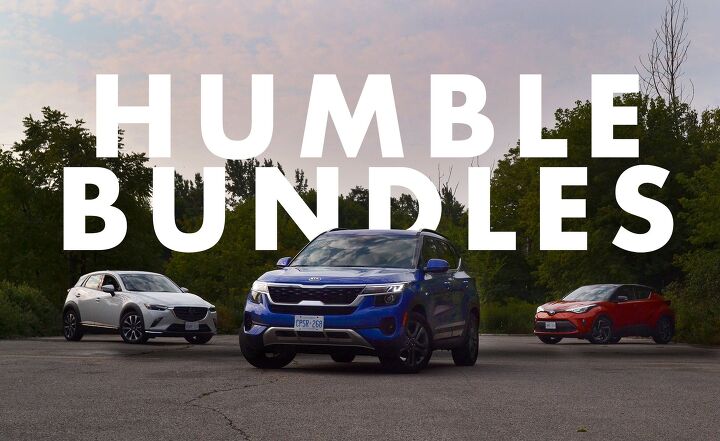
























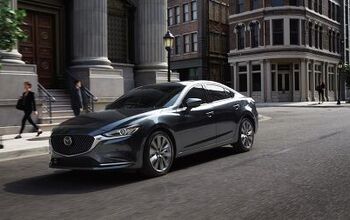


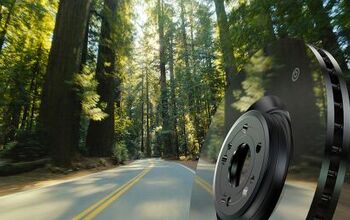
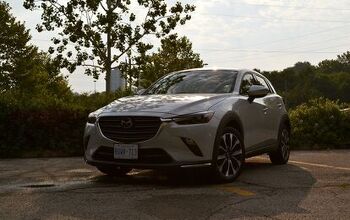




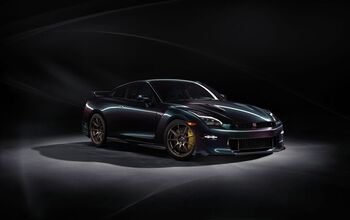


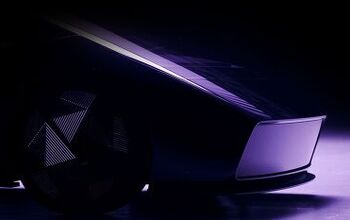

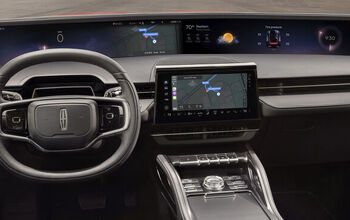
Comments
Join the conversation